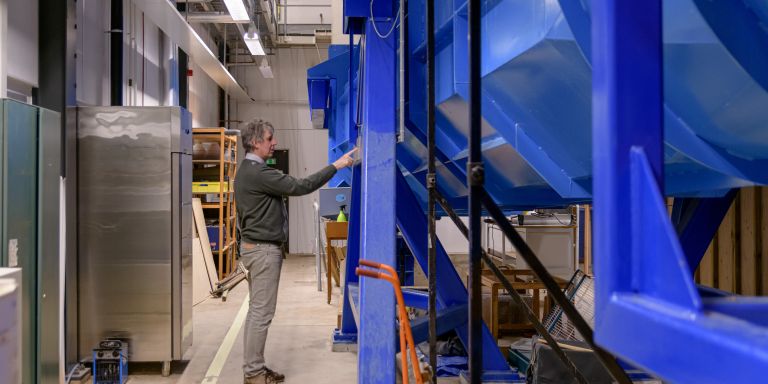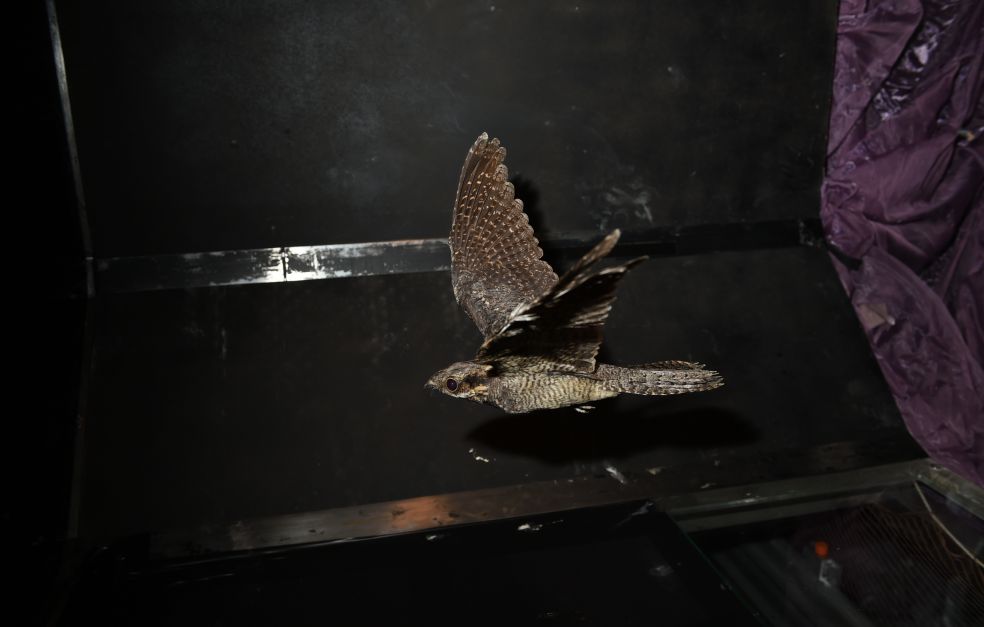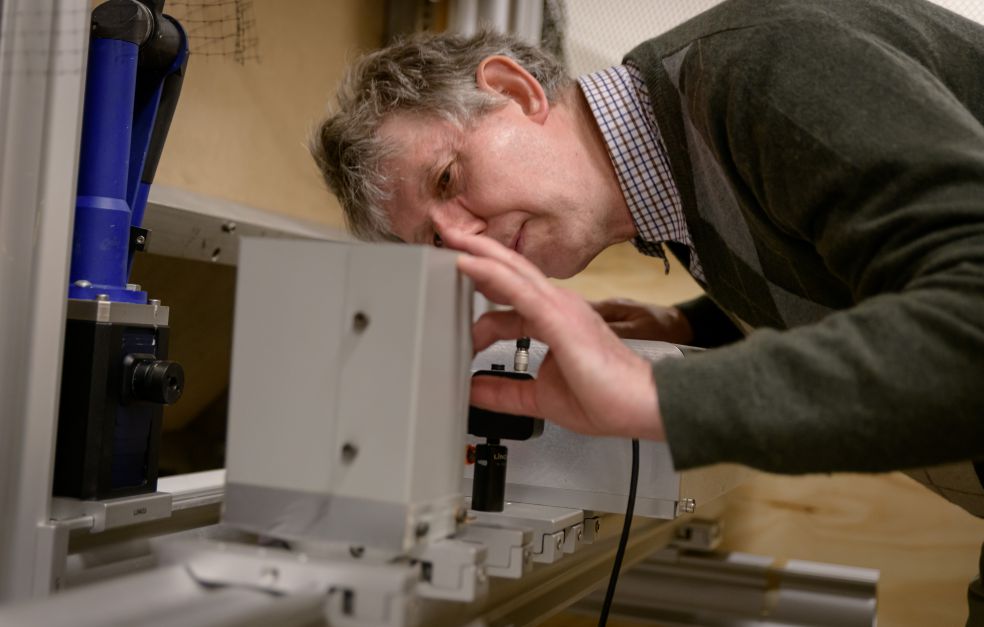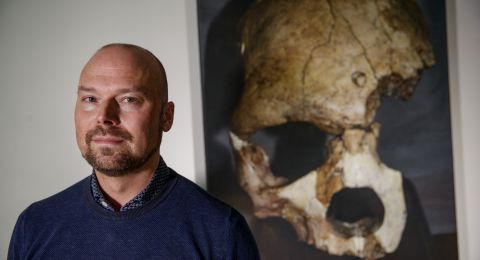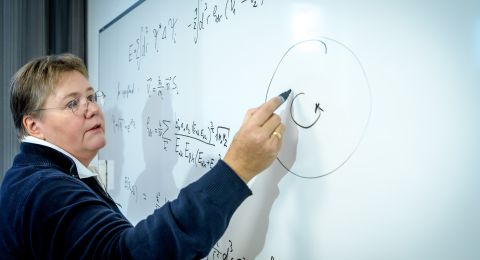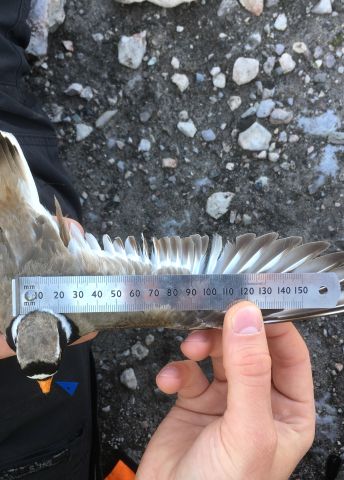
Project Grant 2020
Multilevel efficiency of bird flight: Generating vortices to travel the world
Principal investigator:
Professor Anders Hedenström, Lund University
Co-investigators:
Christoffer Johansson
Susanne Åkesson
Institution:
Lund University
Grant in SEK:
SEK 22.9 million over five years
A bar-tailed godwit (Limosa lapponica) flying from Alaska to New Zealand is like a human running 1,200 marathons back-to-back without any food, drink or rest. This is an extreme example, but common to all migratory birds are the enormous exertions they make in a short time. Funded by Knut and Alice Wallenberg Foundation, Professor Anders Hedenström and his colleagues in Lund are now making an in-depth study of how they do it.
“The aerodynamic models currently used by researchers are gross simplifications. We plan to refine them using wind tunnel experiments here in Lund,” Hedenström says.
The wind tunnel is custom-made for experiments using flying animals. It is twenty-five years old and works in the same way it always has done, but the measurement technology has changed considerably. In the past a smoke machine was one method used to visualize air flows. This is now done using tiny bubbles of helium.
Monitoring the smallest birds using micro data loggers
Modern technology also provides completely new ways of studying migration routes. When GPS transmitters became small enough to attach to birds, they provided much more accurate information than traditional ringing, which, at best, provides useful clues about where migration starts and finishes.
But even the lightest GPS devices are too heavy for the smallest species.
“Over the past ten years we have started to use micro data loggers that the smallest birds can carry. It has revolutionized the field. We now hope to be able to measure how much flying the bird does during migration, and estimate the energy cost during migration for small birds as compared with larger ones,” Hedenström explains.
The researchers in Lund have developed the loggers themselves. The smallest weighs only one gram and can be fitted to very small birds. The position of the bird is recorded using daylight also measured by the logger. The number of hours of daylight shows how far north it is, while the time of sunrise and sunset reveals its longitude. The margin of error is less than 100 kilometers. Also measured are acceleration, air pressure and skin temperature, which reveal whether the bird is flying or resting, how high up it is, and how much it sleeps.
But the researchers do not get to know any of this until the bird returns the following year. Data cannot be retrieved from the logger until it is removed.
“Recapturing birds is an adventure, and is sometimes extremely frustrating. They are marked, and each individual has a unique color combination. We might catch sight of them in the field but be unable to catch them. Then we have to return a week later and try again,” Hedenström says.
Sometimes the researchers have to give a bird up, and therefore also its micrologger. But some birds have also “come back from the dead” one or two years later.
“It’s really pleasing when that happens – ‘aha! It’s alive’. Then we have a logger with two years’ data instead of one.”
Factors behind safer and more efficient migration
Migration is a hazardous period in a bird’s life. The goal of the research project is to learn more about the factors governing bird migration patterns and strategies. Some species migrate in short stages, resting often. Others hardly ever land. On the ground they can fall prey to predators. Searching for food and shelter at an unfamiliar site is also an effort. But flying without a break also has a price. Research has shown that the bird not only loses muscle mass; its organs are also subject to severe stress, and may shrink.
“The bird must migrate as safely and efficiently as possible. We are adopting a holistic approach in the project by moving from fundamental aerodynamics to how efficiently the bird’s body converts metabolic energy into work. Finally, we study how efficiently they carry out the whole journey.”
Energy conversion is tested in the wind tunnel. Hedenström and his colleagues have developed new methods based on injecting bicarbonate containing traceable carbon atoms. When the bird has been flying for a few minutes the researchers can measure how much of the carbon has been exhaled as carbon dioxide, and place that in relation to the number of wing beats.
The species to be studied include pied flycatchers (Ficedula hypoleuca), thrush nightingales (Luscinia luscinia), dunlins (Calidris alpina) and nightjars (Caprimulgus europaeus). If the microloggers, bicarbonate and flow measurements can be seen as the hi-tech part of the project, the low-tech component consists of collecting and tunnel-training the birds. To obtain measurements, the birds must not become tame, but nor must they panic. Getting a bird used to the tunnel takes weeks, sometimes months.
“It sometimes takes so long that the bird has to overwinter with us. But given that the migration season lasts for several months, we usually have time. Besides, food is freely available to them here, so they’re in pretty good shape when we release them. This may help them to catch up with the others.”
Migratory bird numbers have fallen sharply in recent years, climate change being the most common explanation. Hedenström hopes that the research in Lund will shed some light on this issue.
“My guess is that it will be like virtually all research projects: you answer three questions and generate ten more. I’m sure we’ll be able to make real strides, but research never ends.”
Text Lisa Kirsebom
Translation Maxwell Arding
Photo Inger Ekström, Lars Hedenström, Anders Hedenström
